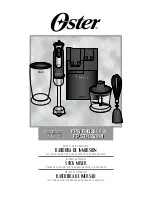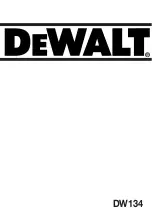
6-26
D i g i t a l 8 • B u s
Starting a New Session
Monitoring the Final Mix
The best way to monitor the final mix is by lis-
tening to the output of the 2-track recorder.
Properly configured, your recorder will automati-
cally switch between source and playback as you
put the deck into stop, play, fast wind, record, and
so on. That way, you’re always hearing your mix
after it goes through the 2-track deck, regardless
of whether or not the tape is rolling.
This is easily accomplished by connecting the
left and right outputs of the 2-track recorder to ei-
ther the 2 TRACK A, 2 TRACK B, or 2 TRACK C
inputs on the rear panel of the Digital 8•Bus. You
can select any of these sources in the Control
Room Section.
If your multitrack tape machine will do it, go
into LOOP mode so it will just play the song over
and over. Start mixing a group of tracks that run
throughout the song, maybe drums or the rhythm
section.
There is a tendency for levels to creep up-
wards as you add more and more tracks to your
mix. One way to keep a handle on this is to set
the L-R Master Fader a few dB below unity, and
to set your initial monitor levels pretty high. As
you get closer and closer to your final, you can
ease the monitor levels down and ease up the
master fader to unity, which is where it should be.
Check your speakers and amplifiers to be sure
that they’re balanced left-to-right and mounted
symmetrically to your mixing position. A 2 dB
shift in monitor balance will produce a 2 dB shift
in the opposite direction in your mix.
Also, check your speaker polarity. This is a
seemingly basic thing, but it’s amazing how many
times we’ve found studio speakers (especially
near-field monitors, which are often plugged and
unplugged regularly) connected with opposing po-
larity. You should train your ears to notice
out-of-polarity conditions instantly. It’s easy to
hear (to us it sounds like a combination of not
hearing enough bass and feeling like our eyes are
slightly crossed), and getting polarity right will
save you much grief in mixing.
Remember that you need to mix so that your
music or program sounds good on anybody’s sys-
tem. Be sure you have some real-world monitor
speakers in addition to the monitors you like so
well, and check back and forth frequently. This is
easy to do with the Digital 8•Bus. Simply use the
SPEAKERS switches in the Control Room Sec-
tion (MAIN and NEAR FIELD). Check at different
monitoring levels, too. A mix that sounds great
when it’s loud will not necessarily sound good at
low volume. Listen at a barely audible level from
time to time. You should still be able to hear the
essential pieces of your mix.
Also, check your stereo mixes in mono regu-
larly during your mix. That’s what the MONO
button in the Control Room Section is for. Televi-
sion and radio are still sometimes broadcast in
mono, and your mix has to sound its best both
ways. When MONO is selected, the L-R Main
LED ladder indicates the summed mono signal in
both sides.
Take a hint from film soundtrack mixers and
set your dialog or lead vocals to about 85 dB/c at
the mixing position. This is a moderate, normal
volume; not quiet but definitely not thundering. If
you have a sound pressure meter available you
can take a measurement to get a feel for how
loud 85 dB is. If you don’t, run down to Radio
Shack and say, “I want #33-2050 or #33-2055.
Here’s $34.99 or $59.99 plus applicable taxes.”
Every set of self-respecting ears should own one.
This monitoring volume will keep you honest
(in the ’90s sense of the word), and keep your
mixes balanced for playback. You should listen at
very low levels, too, and crank it from time to
time to remember why you’re in this line of work,
but stay at the moderate 85 dB/c setting most of
the time. You will save your hearing and also
make better mixes.
Using Apogee UV22®
The Digital 8•Bus is equipped with Apogee’s
UV22 encoding, which we believe provides the
best method available for “dithering” down 24-bit
words to 16-bit words for digital mastering.
You can select one of two “strengths” when
applying the UV22 encoding. For 2-track master-
ing, use the “Normal” setting on the AES/EBU or
S/PDIF outputs (called “Full Power” in the Fat
Channel Display). However, you also have the op-
tion of using UV22 while tracking. In this case,
the best procedure would be to use the “Low
Power” UV22 setting on the Tape Outputs, and
then use the “Low Power” UV22 setting on the
AES/EBU or S/PDIF outputs. For a more in-
depth look at UV22, refer to Appendix D.
Содержание 8-BUS Series
Страница 49: ...3 16 D i g i t a l 8 B u s Start Up ...
Страница 57: ...4 8 D i g i t a l 8 B u s Connections ...
Страница 77: ...5 20 D i g i t a l 8 B u s Preparing for a Session ...
Страница 177: ...7 20 D i g i t a l 8 B u s Automation ...
Страница 207: ...D 2 D i g i t a l 8 B u s Apogee UV22 ...
Страница 219: ...F 4 D i g i t a l 8 B u s Optional I O Cards ...
Страница 227: ...H 2 D i g i t a l 8 B u s Upgrading ...
Страница 232: ...J 3 O w n e r s M a n u a l Screen Shots Surround Sound Matrix Mackie FX Control Panel IVL Vocal Studio Control Panel ...
Страница 233: ...J 4 D i g i t a l 8 B u s Screen Shots Disk Manager File Menu Channel Menu Automation Menu Edit Menu Windows Menu ...
Страница 235: ...K 2 D i g i t a l 8 B u s ...
Страница 237: ...D i g i t a l 8 B u s ...
Страница 239: ...D i g i t a l 8 B u s ...
















































